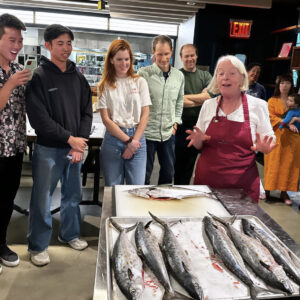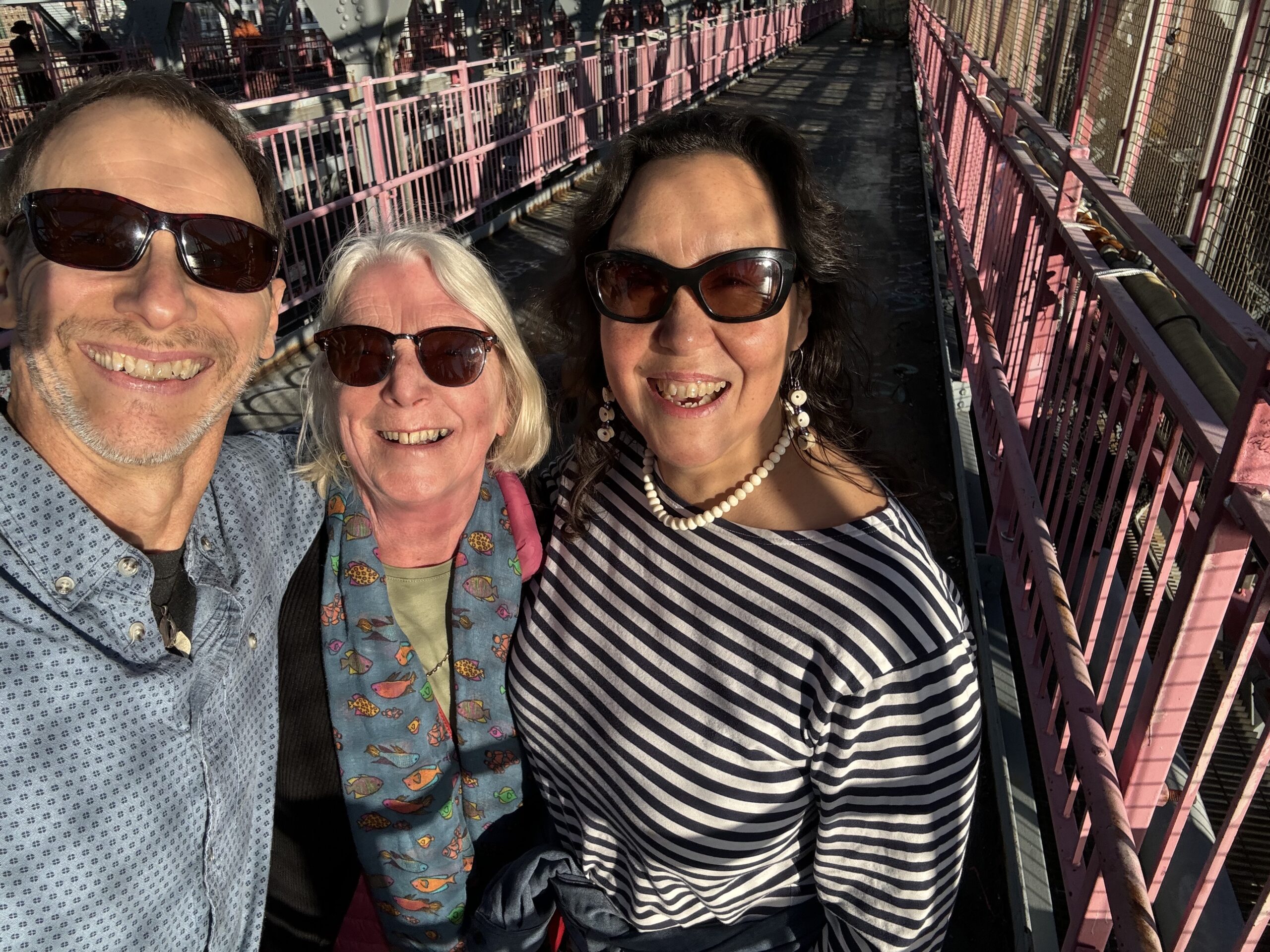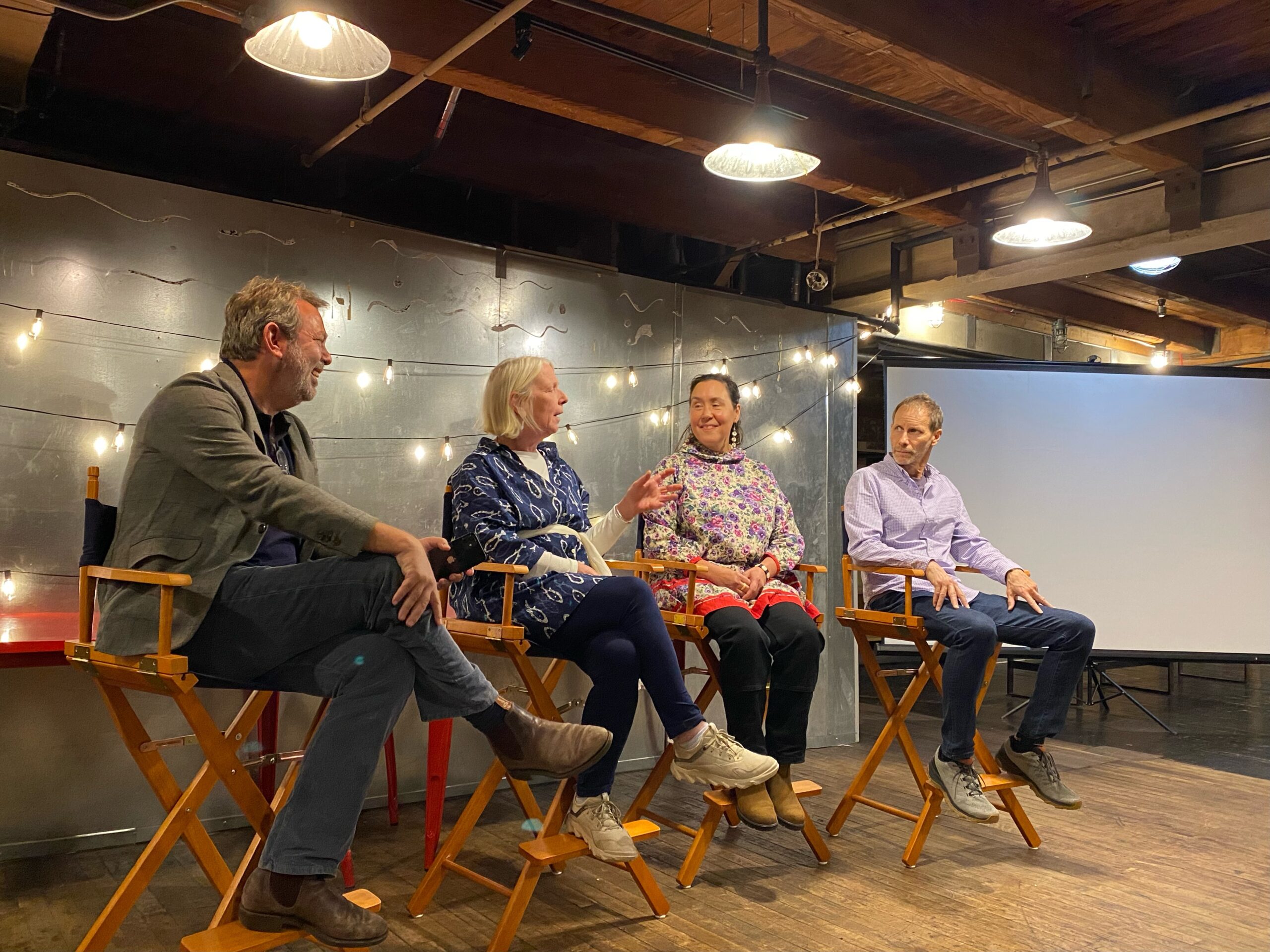“What gives you hope?”
Adam Sachs, former editor of Saveur magazine and renowned food writer posed the question as moderator of the Swimming Upstream panel discussion held at Chelsea Market in New York City on Oct. 23. Co-hosted by Bog & Thunder, a travel and tourism company focused on Irish food and culture, and FIG, a collective of hospitality professionals working to transform the food system from inside the industry, the discussion centered on protecting wild salmon populations around the world.
Smoked salmon whisperer Sally Barnes of Woodcock Smokery in Ireland, Yup’ik commercial fisherman and SalmonState organizer Melanie Brown and I were talking about challenges facing wild salmon populations, including mining threats, climate change, bycatch, and weak policies. We also discussed the colossal threat industrial net pen salmon farms pose to wild salmon populations and coastal communities.
Those narratives are always a bit of a downer. When you stack up the forces that threaten wild salmon, you wonder how they survive.
Educating folks about those challenges is one way to protect wild salmon. Dammed rivers closing access to spawning habitat; warming oceans affecting abundance and location of food sources; big mines threatening to poison salmon rivers and streams; massive bycatch of wild Chinook and coho by the Pacific pollock trawl fleet; the spread of disease and sea lice from net pens, and so on.
But there’s a delicate balance between informing folks and depressing the hell out of them.
So Adam’s question was timely.
Sharing knowledge and building relationships
We talked about how people are increasingly willing to learn more (like those who attended the panel discussion at Chelsea Market!), take a stand, and buy wild salmon. As film director, colleague and Eva’s Wild founder Mark Titus often says, “Eat wild. Save wild.” By supporting a well-managed fishery like the sockeye fishery in Bristol Bay, Alaska (the world’s largest wild sockeye fishery), we support the small-scale fishermen and businesses that harvest the fish. But also, we’re supporting crucial research about population health, habitat quality, etc. that is essential to management decisions that enable a productive fishery while carefully safeguarding a healthy population.
We talked about the amazing coalition of different user groups … commercial, recreational, subsistence fishermen, and Indigenous communities that have stood together for nearly two decades and fiercely defended Bristol Bay against the Pebble Mine, a massive proposed copper and gold mine that would threaten the pristine habitat those sockeye depend on.
We talked about various coalitions like Don’t Cage Our Oceans that are fighting industrial net pen fish farming, or Block Corporate Salmon, which opposes the production of genetically modified (GMO) salmon, aka “frankenfish.”
And we talked about the fact that Nature heals itself whenever we get out of the way. The proof is the recent return of chinook salmon to the Elwah River in Washington state soon after two key dams were removed. We talked about the Herculean effort to remove four key dams along the lower Snake River to restore wild salmon runs through Oregon, Washington and into Idaho.
So yes, we explained there is indeed hope for wild salmon populations, even if that hope comes in incremental stages … as long as we continue these types of conversations, share knowledge, and support responsibly managed wild salmon fisheries from Alaska to Ireland.
A weekend of wild salmon stories
The Swimming Upstream panel discussion was one of four great events hosted and produced by Bog & Thunder from Oct. 20-23.

Sally holding court, preparing to demonstrate how to properly fillet Spanish mackerel.
Several lucky attendees were treated to Sally’s class on properly brining and smoking wild fish, hosted at Platform, a James Beard Foundation show kitchen and education space in Chelsea. Attendees got their hands slimy as they learned how to fillet a fish. They took to Sally’s expert instruction quickly as they carefully cut fillets of Spanish mackerel.
We also participated in a deep dive “lunch & learn” hosted by members of FIG-NYC, digging into issues around local seafood systems and what’s at stake for wild salmon.
The bookend of the weekend was a spectacular “Queen of the Sea” dinner at Korean restaurant Insa in Brooklyn, prepared by Chef Yong Shin. The dashi with seaweed, mushrooms and rice cakes; smoked wild Alaskan salmon with honeynut squash, chicories, pumpkin seeds, & yuzu vinaigrette; and braised mackerel with roots & brassicas served with stone bowl barley rice and aged kimchi all highlighted the conversation about how delicious seafood with values can be.

Salmon friends on the Williamsburg Bridge.
I reflected on the weekend and Adam’s question early the next morning on the ride to the airport. For me, and possibly Melanie, Sally, and Mark (who unfortunately couldn’t join us in New York), hope stems from seeing a glimmer of our passion for protecting wild salmon reflected in the eyes of those we are speaking to at any occasion.
Thanks to Kate McCabe and Chef Max Sussman of Bog & Thunder for giving us the opportunity to share our passion, and maybe spread a little hope too!
Top photo: Wild salmon brain trust. Left to right, Adam Sachs, Sally Barnes, Melanie Brown, and Colles. Photo Courtesy Anthony O’Toole


